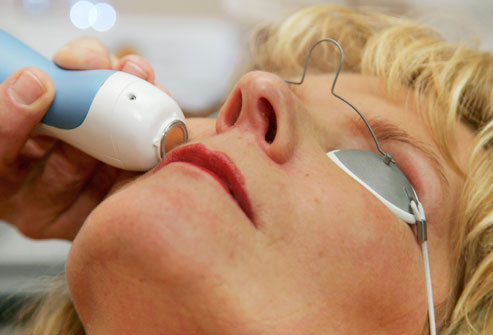The evolution of laser skin treatments has significantly broadened the horizons of dermatological care, offering precise and effective solutions for a myriad of skin concerns. These advanced treatments, which harness the power of focused light to target and rectify skin issues, have become a cornerstone in both clinical and in-home care settings. Particularly for individuals receiving in-home care, including those in elder care, senior care, or managing conditions like dementia, the adaptability of certain laser treatments presents a unique opportunity to enhance skin health within the comfort and safety of one’s home. This introduction to laser skin treatments will explore not only the technological underpinnings and types of treatments available but also how they can be seamlessly integrated into in-home care routines, ensuring that individuals across all care spectrums have access to these transformative skin health solutions.
Basics of Laser Skin Treatments
Laser skin treatments represent a cutting-edge domain within dermatology, utilizing focused light to precisely target various skin layers for therapeutic and cosmetic improvements. At the core of these treatments is the principle of selective photothermolysis, where lasers emit specific wavelengths of light to heat and eliminate or modify targeted skin cells without harming surrounding tissues. This section delves into the foundational aspects of laser skin treatments, providing a clear understanding of how they work, the types available, and what they aim to achieve.
How Laser Treatments Work
The mechanism behind laser treatments involves the application of concentrated light beams to the skin. These beams selectively target and treat different skin issues based on the wavelength (color) of the light, the energy level (intensity), and the duration (pulse width) of the laser exposure. For instance, some lasers are absorbed by the pigment in dark spots or tattoo ink, effectively breaking them down. Others target water molecules in the skin to promote collagen production, leading to firmer, smoother skin. The precision of laser technology allows for targeted treatment of skin concerns like fine lines, wrinkles, hyperpigmentation, and scarring, with minimal impact on the surrounding skin.
Incorporating Laser Treatments into In-Home Care
For individuals under in-home care, including those in elder care, senior care, or living with dementia, the integration of laser skin treatments into their care regimen offers a promising avenue for skin health management. Non-ablative laser treatments, known for their minimal downtime and lower risk profile, are particularly suited for in-home settings, where comfort and convenience are paramount. These treatments can be administered with portable laser devices by qualified professionals who visit the home, making it easier for individuals with mobility issues or those who require constant care to receive treatment. It’s crucial, however, to ensure that any in-home laser treatment is performed under the guidance of a certified dermatologist or skincare professional to ensure safety and efficacy. This approach not only democratizes access to advanced skin care but also underscores the importance of personalized, compassionate care in improving the quality of life for those in need.
Types of Laser Skin Treatments
- Ablative Lasers: Ablative lasers, such as CO2 (carbon dioxide) and Erbium lasers, work by removing the outer layers of the skin. They are effective for addressing wrinkles, scars, and sun damage by stimulating collagen production during the healing process. The result is smoother, younger-looking skin. However, ablative lasers require a significant recovery period, as they involve more intensive skin resurfacing.
- Non-Ablative Lasers: Non-ablative lasers, including IPL (Intense Pulsed Light) and fractional lasers, target the dermis to promote collagen growth without damaging the skin’s surface. These treatments are suitable for treating acne scars, age spots, and improving skin texture with minimal downtime compared to ablative lasers.
- Fractional Lasers: Fractional lasers break the laser energy into thousands of tiny beams to treat only a fraction of the skin in the targeted area. This technique allows for quicker recovery times and is effective for treating fine lines, scars, and improving overall skin texture.
- Q-Switched Lasers: Used primarily for tattoo removal and pigmentation disorders, Q-switched lasers emit high-energy pulses to break down pigment or ink particles in the skin, which are then absorbed by the body’s immune system.
Choosing the Right Laser Treatment
Selecting the appropriate laser treatment depends on various factors, including skin type, condition severity, and desired results. Consulting with a dermatologist or skincare professional is crucial to assess the skin’s condition and determine the most suitable laser treatment option. It’s also important to consider the recovery time and potential side effects associated with each type of laser treatment to ensure it aligns with one’s lifestyle and skin health goals.
Conclusion: Navigating the World of Laser Skin Treatments
Laser skin treatments stand at the forefront of dermatological innovation, providing individuals with effective solutions for enhancing skin health and appearance. The journey to selecting the right laser treatment involves a thorough understanding of the available options and a careful consideration of one’s skin type, concerns, and desired outcomes. With the guidance of experienced dermatologists and skin care professionals, individuals can navigate the array of laser technologies to identify the treatment that best suits their needs. This collaborative approach ensures a personalized treatment plan that maximizes benefits while minimizing risks, leading to improved skin health and confidence.
As the field of laser dermatology continues to evolve, staying informed about the latest advancements and treatment options is crucial for those looking to leverage these technologies for their skin care needs. The future of laser skin treatments promises even greater precision, efficacy, and safety, expanding the possibilities for skin rejuvenation and repair. By embracing the potential of laser technology and seeking professional guidance, individuals can embark on a transformative journey towards healthier, more radiant skin. Whether aiming to restore youthful vitality, correct dermatological issues, or maintain skin health, laser treatments offer a powerful tool in the pursuit of beauty and wellness.




